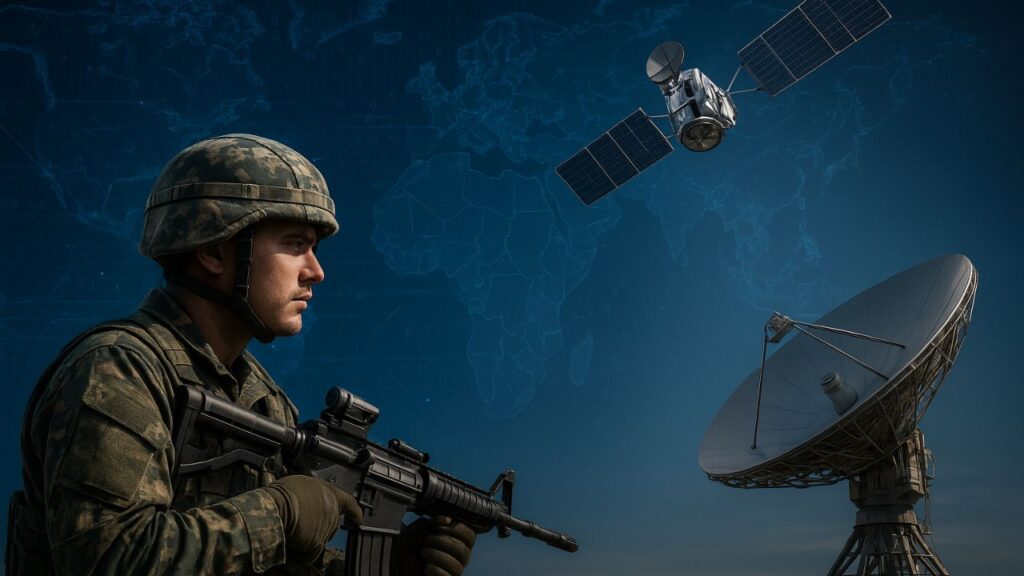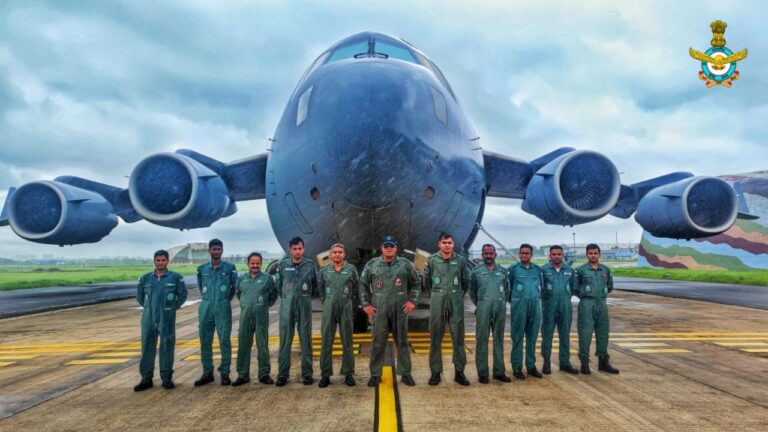
Modern warfare is no longer confined to land, sea, and air. The rise of cyber and space domains has transformed the global security environment, pushing nations to prepare for threats that transcend physical boundaries. India, positioned as a rising power in Asia and a key Indo-Pacific player, cannot afford to neglect these emerging arenas. Cyberattacks on critical infrastructure and weaponization of outer space are no longer hypothetical—they are real, immediate challenges. India’s defence strategy is therefore undergoing a paradigm shift to strengthen its cyber resilience and space-based capabilities.
Why Cyber and Space Matter for National Security
- Cyber Domain: A well-planned cyberattack can paralyze power grids, banking networks, defence communications, or even satellite systems without a single shot being fired.
- Space Domain: Satellites today are crucial for communication, navigation, missile guidance, reconnaissance, and disaster management. Losing space assets during conflict would cripple military and civilian life alike.
- Great Power Rivalry: China and the U.S. are investing heavily in cyber forces and anti-satellite (ASAT) weapons. India must keep pace to maintain deterrence.
India’s Cybersecurity Capabilities
India has recognized cyber warfare as a critical security frontier:
- Defence Cyber Agency (DCA): Established in 2019, the DCA integrates cyber operations across the Army, Navy, and Air Force. It is tasked with offensive and defensive cyber capabilities.
- National Critical Information Infrastructure Protection Centre (NCIIPC): Protects sensitive assets in power, finance, transport, telecom, and defence.
- CERT-In: The national nodal agency for cyber incident response, detecting and mitigating cyberattacks.
- Collaboration with Allies: India works with the U.S., Israel, and Japan to enhance cyber resilience and share threat intelligence.
Yet, India faces frequent challenges such as Chinese-origin cyber intrusions on power grids and ransomware attacks on critical data networks.
Cyber Warfare in Military Operations
India is gradually integrating cyber capabilities into its military doctrines:
- Offensive Cyber Operations: Designed to disable enemy networks, radars, and command structures.
- Electronic Warfare (EW): Integration of cyber tools with EW to jam enemy communications.
- AI in Cyber Defence: Artificial Intelligence and Machine Learning are being tested to predict, detect, and counter cyber intrusions faster than human-led systems.
- Military Exercises: Joint exercises like Cyber Suraksha and participation in global cyber drills enhance readiness.
India’s Space Capabilities
India’s space program has long been a symbol of technological self-reliance. For defence purposes, space has become a decisive frontier:
- Satellite Assets: India operates a constellation of communication, reconnaissance, and navigation satellites such as GSAT, Cartosat, and RISAT series.
- Indian Regional Navigation Satellite System (NavIC): Provides indigenous navigation capabilities crucial for military operations.
- ISRO’s Role: While ISRO is primarily a civilian agency, its dual-use technology supports the armed forces with satellite launches and remote sensing.
- DRDO’s Contribution: Defence satellites and surveillance assets are increasingly being developed under DRDO-led programs.
ASAT Test – A Turning Point
In March 2019, India conducted Mission Shakti, successfully destroying a satellite in low-earth orbit with an anti-satellite missile.
- This made India the fourth country (after the U.S., Russia, and China) to demonstrate ASAT capability.
- The test showcased India’s ability to deter hostile actions against its space assets.
- However, it also raised concerns about space debris and the need for responsible military use of outer space.
Institutional Mechanisms for Space Security
- Defence Space Agency (DSA): Established to coordinate space-based military operations.
- Integrated Space Cell (ISC): Functions under the Integrated Defence Staff (IDS) to ensure synergy between military and civilian space assets.
- Public-Private Partnerships: Indian start-ups like Skyroot and Pixxel are also contributing to the space ecosystem, enhancing India’s dual-use capabilities.
Challenges in Cyber and Space Domains
Despite progress, India faces significant hurdles:
- Capacity Gaps: India’s cyber workforce is far smaller compared to China’s estimated 50,000-strong cyber force.
- Dependence on Foreign Tech: Heavy reliance on imported hardware and software exposes vulnerabilities.
- Space Militarization by Rivals: China’s PLA has advanced ASAT systems, co-orbital weapons, and jamming technology.
- Doctrinal Clarity: India still lacks a fully articulated national cyber warfare and space warfare doctrine.
- Budgetary Limitations: Space and cyber programs often compete with conventional military needs for funding.
Future Roadmap
For India to secure its frontiers in cyber and space, the following steps are crucial:
- Develop Indigenous Cyber Tools: Reduce dependency on foreign platforms by investing in domestic cyber defence technologies.
- AI and Quantum Computing: Leverage next-generation tech for encryption, secure communications, and cyber resilience.
- Strengthen Space-Based ISR: Expand reconnaissance, early warning, and secure communication satellite networks.
- Counter-Space Capabilities: Invest in directed energy weapons, satellite jamming, and resilient space architectures.
- International Cooperation: India should push for global norms against weaponization of space while building strong bilateral partnerships in cyber and space.
Conclusion
Cyber and space warfare are no longer futuristic scenarios; they are present-day realities shaping the defence doctrines of major powers. For India, investing in these domains is not optional but vital for national security. By enhancing institutional capacity, fostering innovation, and integrating cyber and space strategies with conventional military strength, India can ensure it remains a formidable and future-ready power.






